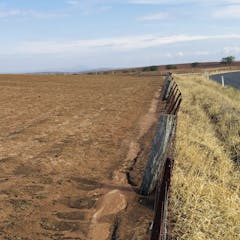
Articles on Regenerative agriculture
Displaying all articles

In the face of growing social and environmental challenges, organizations in the food and agriculture sector are increasingly turning to nature for inspiration.

We know industrial farming needs to change. But regenerative agriculture may not be the transformation our global food system needs.

As Prince of Wales, Charles regularly met scientists to learn more about environmental research. Two Australian researchers recall encounters with the new monarch that left an impression.

Sam Vincent’s new book is a comic portrait of a farming apprenticeship, an interrogation of industrial agriculture and an example of how farmers are connecting with the land’s traditional owners.

Industry seeks to capitalize on regenerative agriculture, but standards that focus only on carbon or other select environmental metrics will undermine its transformative potential

Farmers are stuck in a chemical war against weeds, which have developed resistance to many widely used herbicides. Seed companies’ answer – using more varied herbicides – is causing new problems.

Permaculture – a mashup of ‘permanent’ and ‘culture’ – is a way of doing agriculture that’s inspired by the resilience and biodiversity of healthy natural ecosystems.

Adopting more environmentally conscious farm models would safeguard our agricultural exports, cut emissions and help protect nature.

The federal budget included $32 million to promote schemes in which farmers who adopt sustainable practices earn money on private markets. Evidence suggests the approach is plagued with problems.

Solve the climate and extinction crises together, or solve neither.

Policymakers want to pay farmers for storing carbon in soil, but there are no uniform rules yet for measuring, reporting or verifying the results. Four scholars offer some ground rules.

Despite the many jobs on offer, agriculture courses are struggling to attract students. A visionary curriculum is needed that is as exciting, diverse and challenging as the sector itself is becoming.

It’s painfully clear nature is buckling under the weight of farming’s demands. There’s another way – but it involves accepting nature’s limits.

A new generation of ranchers is exploring sustainable ways to raise cattle, sheep and goats in California. Some are grazing herds on fire-prone lands, reducing wildfire risks and improving soils.

Investing in farming methods that improve lands and water, and in rural infrastructure and markets, could bring new prosperity to agricultural communities.

Regenerative agriculture has the potential to build production and reducing pollution, but it needs a clearer definition.

More than one-fifth of global warming emissions come from land use. Sustainable farming can make soil healthier and better able to soak up carbon, while saving energy and boosting food production.

US agriculture is dominated by large farms that rely on chemical inputs. In contrast, regenerative farming makes land and water healthier by mimicking nature instead of trying to control it.
